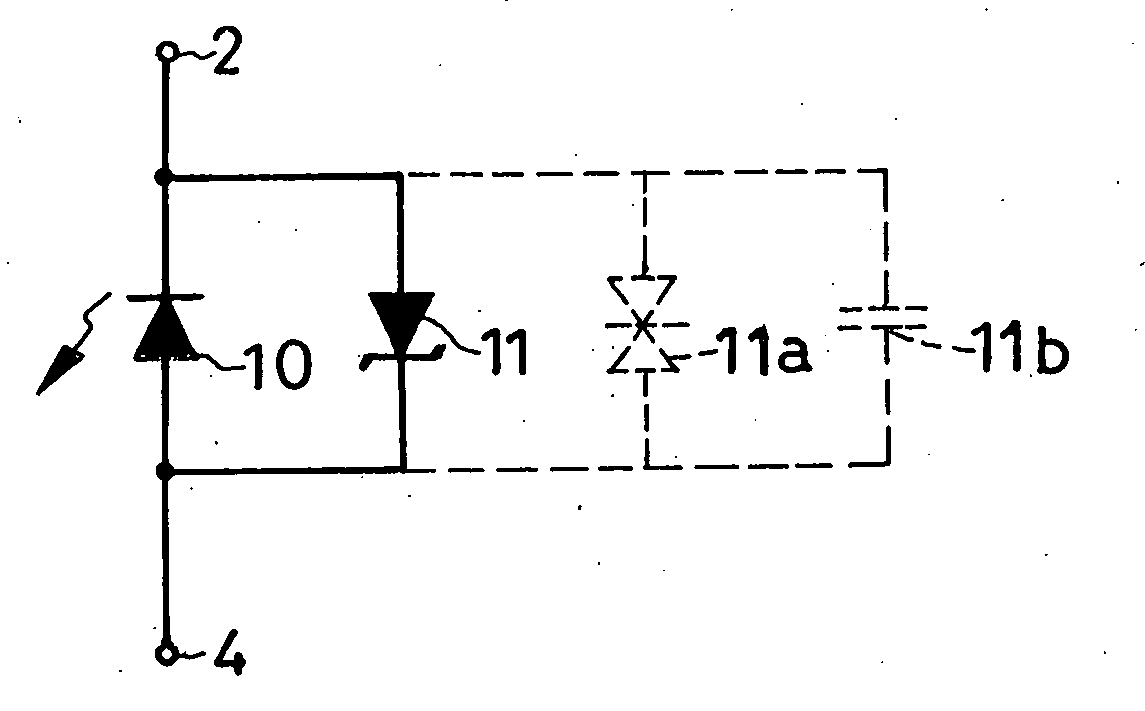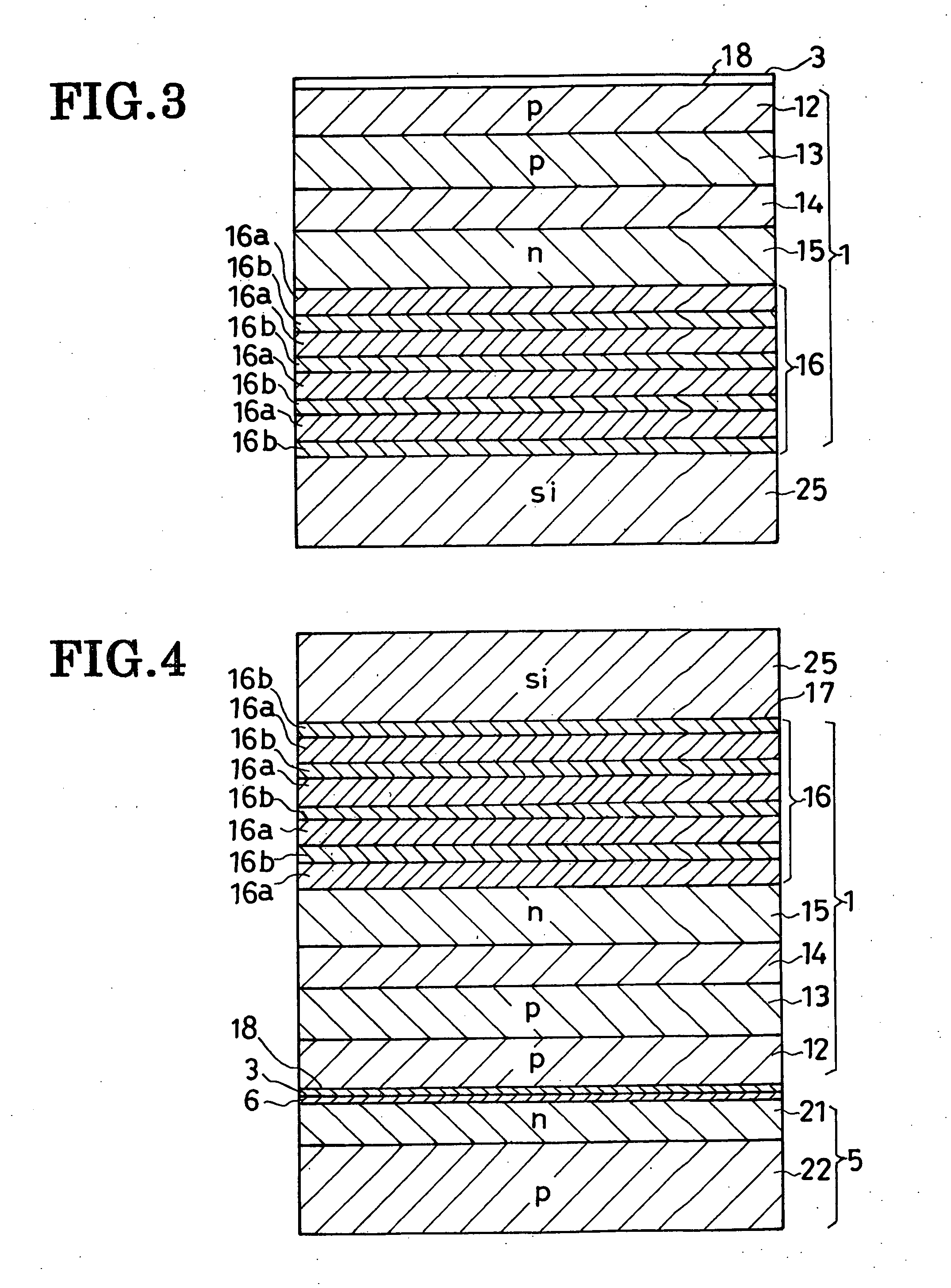Light-emitting semiconductor device having an overvoltage protector, and method of fabrication
a technology of overvoltage protector and light-emitting semiconductor, which is applied in the direction of emergency protective circuit arrangement, emergency protective arrangement for limiting excess voltage/current, solid-state device, etc., can solve the problems of unnecessarily bulky, complex and costly construction of overvoltage-proof light-emitting device, and device susceptible to breakdown, etc. , to achieve the effect of less expensive construction, simple structure and less bulky
- Summary
- Abstract
- Description
- Claims
- Application Information
AI Technical Summary
Benefits of technology
Problems solved by technology
Method used
Image
Examples
embodiment
OF FIG. 5
[0071]FIG. 5 shows the second preferred form of overvoltage-protected light-emitting device according to the invention, which is akin in construction to the first preferred form of FIG. 1 except that a different method is employed here for electrically interconnecting the LED and zener diode. The FIG. 5 device has a channel 30 extending centrally therethrough between the major surface 17 of the light-emitting semiconductor region 1 and the major surface 20 of the protector baseplate 5. The channel 30 is in register with the first electrode 2 and less in cross sectional size than the same, so that it does not interfere with light emission by the device.
[0072] Received in the channel 30 are a tubular insulator 8a and, within it, a connector 9a. The insulator 8a is directly held against the surfaces bounding the channel 30. The connector 9a has a pair of opposite ends both projecting from within the insulator 8a and both flanged. One flanged end of the connector 9a is held ag...
PUM
 Login to View More
Login to View More Abstract
Description
Claims
Application Information
 Login to View More
Login to View More - R&D
- Intellectual Property
- Life Sciences
- Materials
- Tech Scout
- Unparalleled Data Quality
- Higher Quality Content
- 60% Fewer Hallucinations
Browse by: Latest US Patents, China's latest patents, Technical Efficacy Thesaurus, Application Domain, Technology Topic, Popular Technical Reports.
© 2025 PatSnap. All rights reserved.Legal|Privacy policy|Modern Slavery Act Transparency Statement|Sitemap|About US| Contact US: help@patsnap.com



